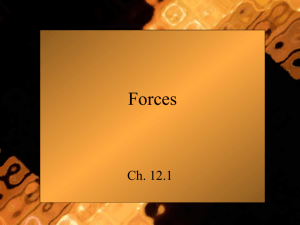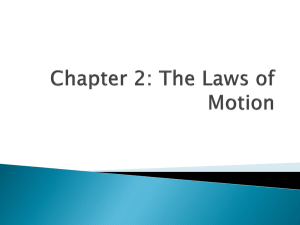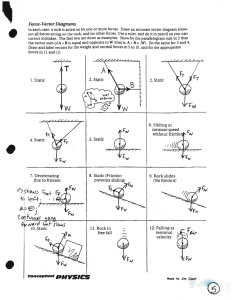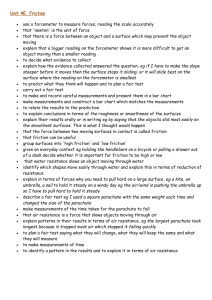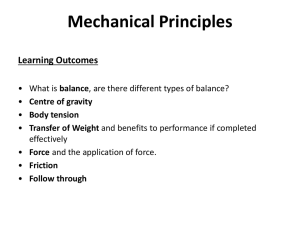File - Fifth Grade Math Science with Ms. B
advertisement
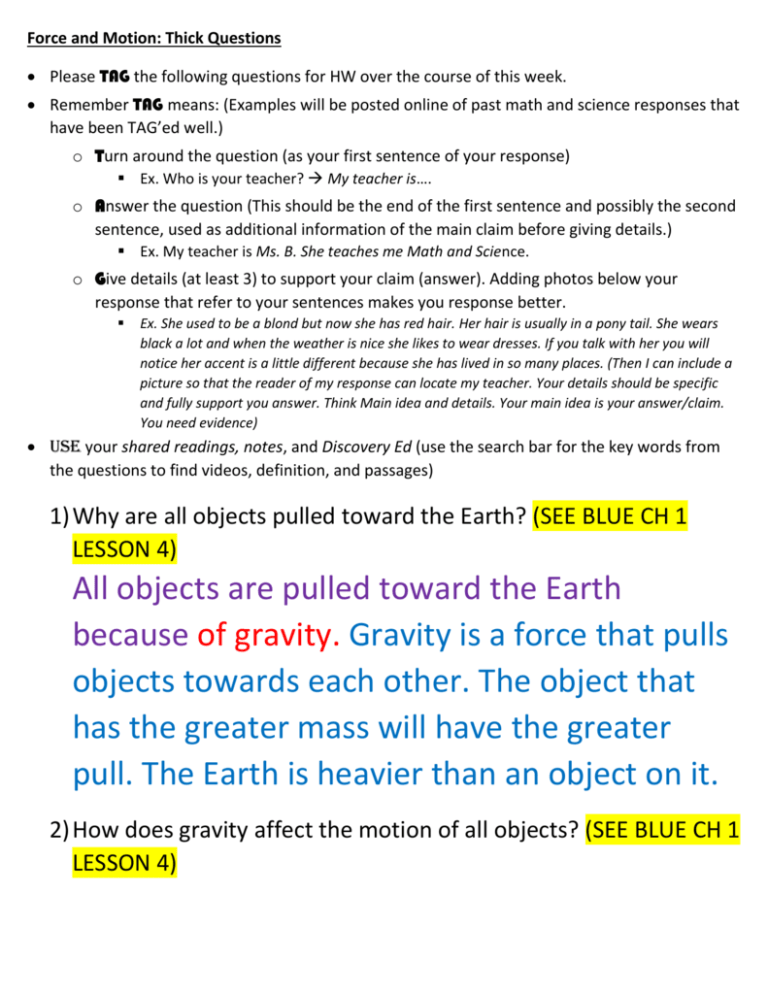
Force and Motion: Thick Questions Please TAG the following questions for HW over the course of this week. Remember TAG means: (Examples will be posted online of past math and science responses that have been TAG’ed well.) o Turn around the question (as your first sentence of your response) Ex. Who is your teacher? My teacher is…. o Answer the question (This should be the end of the first sentence and possibly the second sentence, used as additional information of the main claim before giving details.) Ex. My teacher is Ms. B. She teaches me Math and Science. o Give details (at least 3) to support your claim (answer). Adding photos below your response that refer to your sentences makes you response better. Ex. She used to be a blond but now she has red hair. Her hair is usually in a pony tail. She wears black a lot and when the weather is nice she likes to wear dresses. If you talk with her you will notice her accent is a little different because she has lived in so many places. (Then I can include a picture so that the reader of my response can locate my teacher. Your details should be specific and fully support you answer. Think Main idea and details. Your main idea is your answer/claim. You need evidence) Use your shared readings, notes, and Discovery Ed (use the search bar for the key words from the questions to find videos, definition, and passages) 1) Why are all objects pulled toward the Earth? (SEE BLUE CH 1 LESSON 4) All objects are pulled toward the Earth because of gravity. Gravity is a force that pulls objects towards each other. The object that has the greater mass will have the greater pull. The Earth is heavier than an object on it. 2) How does gravity affect the motion of all objects? (SEE BLUE CH 1 LESSON 4) Gravity affects the motion of all objects by pulling them towards Earth’s center, or surface. Objects that are going downhill will accelerate, or go faster. Objects that are going uphill will decelerate, or go slower. Objects on a flat surface will continue to do what they are doing, unless they are trying to be in the air. In that case, they will be pulled back down. 3) How is friction created? (SEE BLUE CH 1 LESSON 4) Friction is created when two surfaces, or objects, come into contact and are rubbed against each other. For instance, when you rub your hands together over and over it gets hotter because they continue rubbing against each other. Another example is tires rubbing against gravel or concrete. This friction slows the car which allows it to stay on the road. The last main example of friction being created is a sail on a boat rubbing against the air. This friction between the sail and the air allows the sail to stay up and move the boat. 4) How is an object affected when it rubs against another object? (SEE BLUE CH 1 LESSON 4) An object is affected when it rubs against another object because friction is created and changes the motion of the object. When cars are driving over gravel there is more friction created then when cars are driving over fresh blacktop. Therefore the car on the gravel will move slower than the car on the blacktop. When objects are thrown through the air, the air rubs against the object and slows it down. When an object falls through atmosphere the air slows it down. 5) How does a change in mass affect the motion of objects? A change in mass affects the motion of objects in multiple ways. If you make an object HEAVIER it will slow down on a flat surface or if it’s going uphill. If you make the object LIGHTER it will go faster on a flat surface, or it will be able to go a little further, or faster, uphill. If you make the object TOO HEAVY it will not move. 6) How can we model the relationship of position, motion, direction and speed? We can model the relationship of position, motion, direction, and speed with graphs or diagrams. If you use a graph you can show whether the position of an object is changing. This means it is in motion. You can show whether it is moving AWAY or BACK to the reference point. You can calculate the speed by looking at the change in distance over time. A diagram can show you the position of an object compared to another. Multiple diagrams can help you examine the motion and speed of objects. ***This assignment and your vocab booklet will prepare you for your Force and Motion Test which will be Thursday December 17th. BOTH ARE GRADED ASSIGNMENTS.


